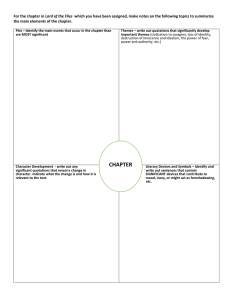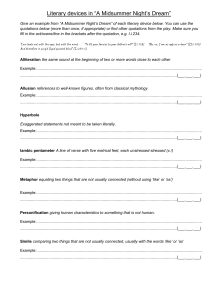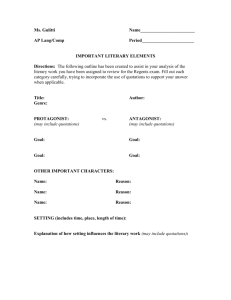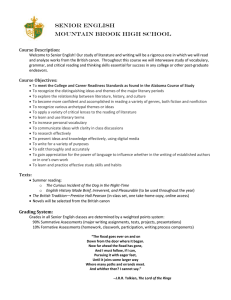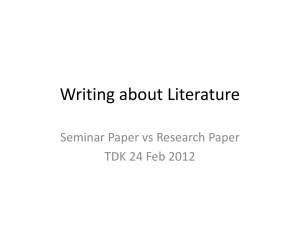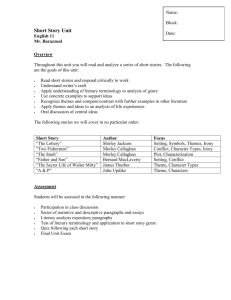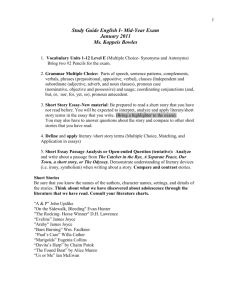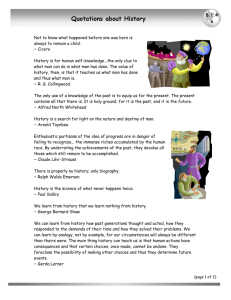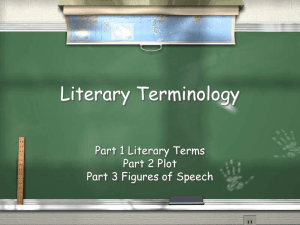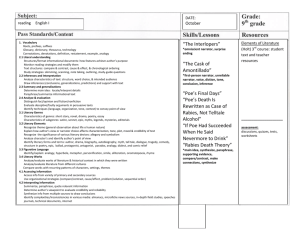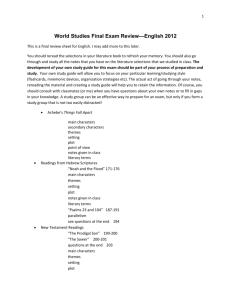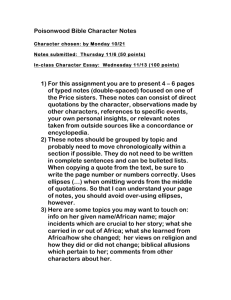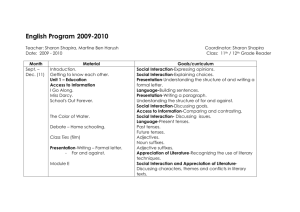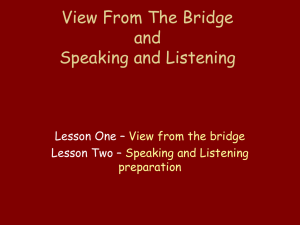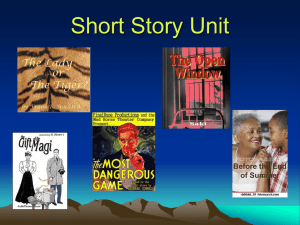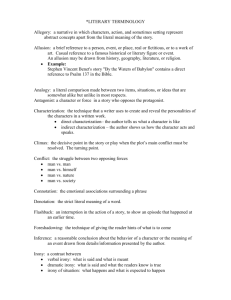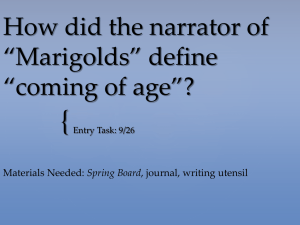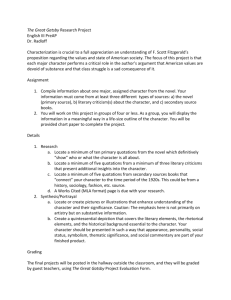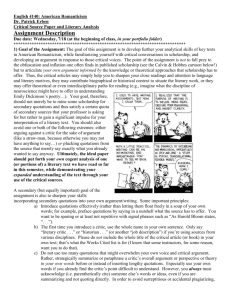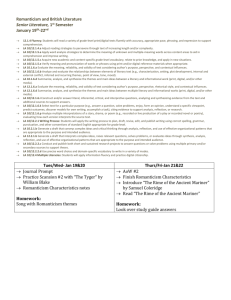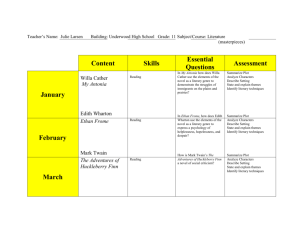1.) A Literary Reduction Fall intercession
advertisement
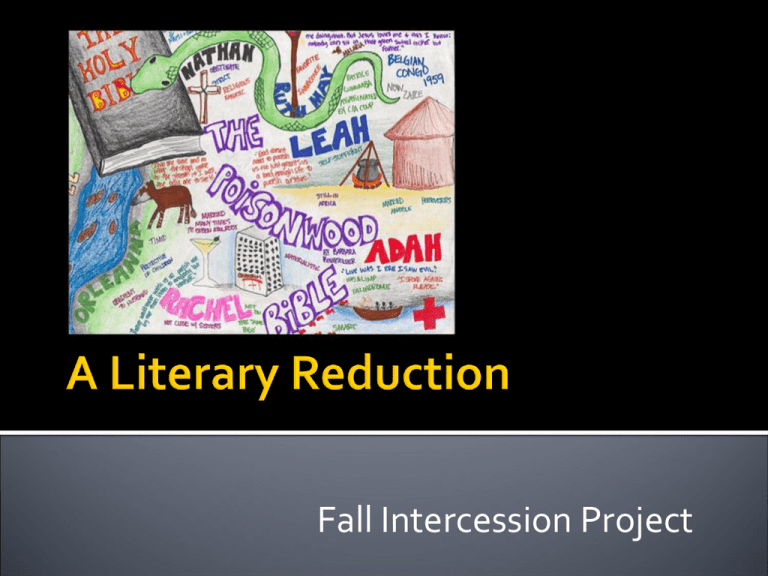
Fall Intercession Project What is it? A sample of a reduction for “A Raisin in the Sun” A reduction is to reduced or distilled the essence of a literary work. Upon completion of a work, you will individually create your own reduction, including all the information you deem is necessary in order to fully understand the work. It is a way to condense and organize important information and thoughts regarding a particular work. It is not meant to represent all you know about a work; rather each item is a link or spark meant to elicit further chains of thought. Your reduction will manifest how you have internalized the work. How do I construct one? A reduction is created on a sidle horizontal sheet of 81/2 x 11” or 8 ½ x 14” paper. Individual selection is key to the final product-- no two reductions are alike. Organize information on the page in whatever way that makes sense to you. Your reduction may contain groups of lists of important facts and insights. You might use dashes, bullets, arrows, boxes, brackets, underlining or shading in creating a graphic organizer to highlight items and make connections. You might use acts or chapters as organizing tools. The format is open-ended and creative. You will draw on many sources: reading class discussion, other writing assignments, or working with other classmates at times. Literary terms will probably play an important role in your reduction. For example, you might include a phrase that suggests foreshadowing, a note about an object that seems to be symbolic, or specific examples of figurative language or irony and their significance. You might include a list of adjectives frequently used to describe a particular character, analysis of the setting and its effect, quotations from or about different characters that reveal their motivations, a list of themes or images, or any detail that is important to understanding the work. Why would I want to construct one? Reductions help you organize your thoughts about a work, not only summarizing them, but synthesizing them. They thus allow for a deeper understanding and the ability to see relationships and patterns in works. They aid in seeing the work as a whole rather than just focusing on its parts. They also serve as excellent study tools, helping you to remember salient aspects of a work and emphasizing its patterns and connections. Sample of a reduction This is a sample of a reduction for the novel The Poisonwood Bible by Barbara Kingsolveris A bestselling novel about a missionary family, the Prices, who in 1959 move from Georgiato the village of Kilanga in the Belgian Congo. Creating a reduction of literature provides you with the opportunity to think both analytically and comprehensively (parts and whole). Here are some guidelines: Use one side of an8 ½ x 11 or 8 ½ x 14 inch unlined paper only. Include the following information: Title of work with picture Author- give author’s name Characters- List the characters and identify who each is in the novel- choose a person (famous or not) to play each character- pictures and some creative representation of the character(s) Outline of significant events in plot (similar to a plot outline) Setting- when and where (time, place, date) Quotations (3)- list three major quotations, identify the speaker and explain the meaning. Symbols (3)- pictures of the symbols and explain what they symbolize. Themes (3)- pictures of the themes and a brief explanation of how each theme is developed in the text. Point of view- who tells the story and is it told in 1st person, 2nd, 3rd point of view? Limited or omniscient? (narrator or no narrator) Place your name and date on back of your Literary Reduction. Be Creative!!!
